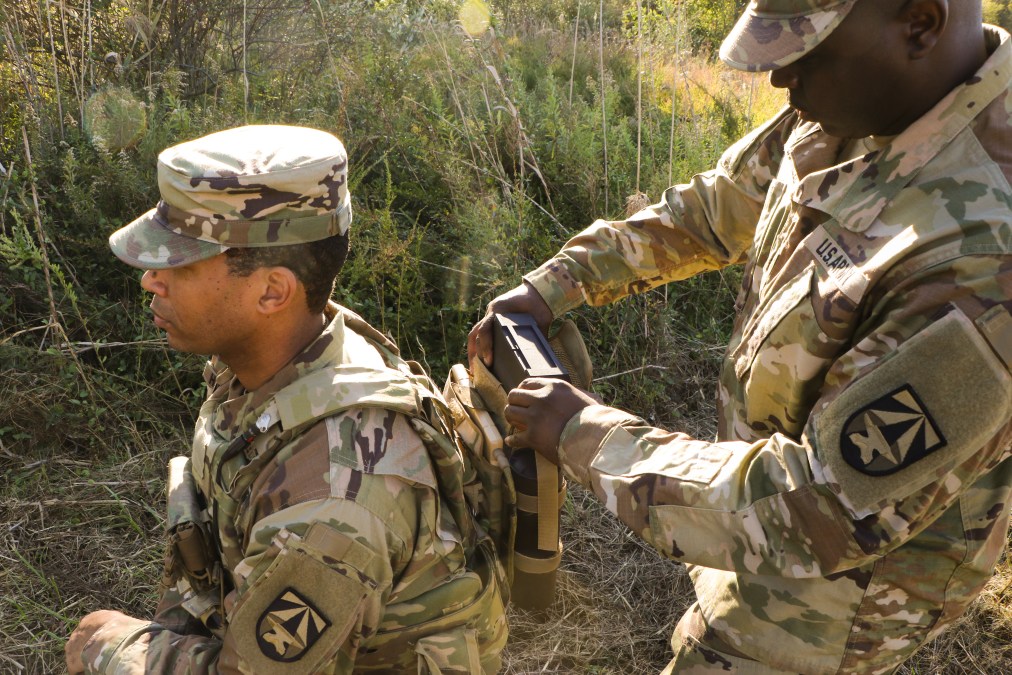Army to begin air-to-ground network extension experimentation

The Army will be conducting experiments to extend its ground forces’ communications capabilities through the air.
Past efforts have aimed to improve communications between aircraft and ground units. But this time, the service be looking to put waveforms in their ground communications assets on airborne systems to assess ground extension for mesh networking and thickening of the network.
These experiments are part of developing design goals for future communications capability deliveries in 2025 and 2027.
The Army has adopted a multiyear strategy involving the incremental development and delivery of new capabilities to its integrated tactical network, involving a combination of program-of-record systems and commercial off-the-shelf tools. Those “capability sets” now provide technologies to units every two years, each building upon the previous delivery. Capability Set 21 was primarily designed for infantry brigades; Capability Set 23 is focused on Stryker brigades, and Capability Set 25 is focused on armored brigades.
There are initial design goals for this aerial networking tier for Capability Set 25, and officials want to line up requirements with funding in future years for more capabilities related to Capability Set 27.
During this incremental build process, the Army has sought to concurrently field, experiment and build design goals for future capability sets as a means of harnessing the best technologies and getting soldier feedback early in the process.
Army officials briefed their plans earlier this week during the eighth Technical Exchange Meeting in Philadelphia. These events gather members of industry, the Army acquisition community, Army Futures Command and the operational community to outline priorities and capabilities to modernize the service’s tactical network.
The Army is placing two waveforms — TrellisWare’s TSM and Silvus — from its integrated tactical network on airborne assets and will be looking at a variety of things.
“We’ve done this before in the past, but what are we doing that’s different? This go around, we’re looking at the detectability of it, we’re looking at jamming, we’re looking at determining that CONOPs [concept of operation] so that we can go back and eventually get a requirement that we could put down and eventually have this dedicated comms relay asset,” said Scott Newman, project manager for interoperability, integration and services at Program Executive Office Command, Control, Communications-Tactical.
Newman told FedScoop after his remarks that while the Army has had nodes up for some time, they’ve never examined how these systems in the air would respond if attacked or jammed.
Specifically, this year officials are looking at low probability of intercept and low probability of detection, and what the concept of operations would be to respond to potential jamming threats.
“That hasn’t been done before. We’ve always had stuff up in the air that said, ‘Okay, yeah, an aerial node provides range extension and provides connectivity,’ but we never solidified what the CONOPs actually means. That’s what we’re going to do now,” he said. “We just want to see, okay, if the enemy jams us, how is it affected in the air.”
He continued: “We’re going to replay those exact same threats, or the threats that we’ve seen from current activities that are airworthy, I’ll call it, and see how what will happen if we are attacked in the air.”
Moreover, while air-to-ground networking has been done aboard helicopters in the past, this time, the Army wants to experiment using unmanned systems, particularly those that would be organic to units, such as smaller Group 1 or Group 2 drones.
The Army is planning to conduct these experiments in fiscal 2022 and 2023 during NetModX — an annual experiment to test how technologies fare in operatically realistic environments — and Project Convergence, an annual capstone experiment the Army is conducting to test concepts related to the Pentagon’s larger Joint All-Domain Command and Control (JADC2) effort to better connect sensor and shooter data.
Next year, the Army plans to put out a request for information related to size, weight and power (SWaP) considerations for radios and aircraft.
“We’re going to take our lessons learned. We’re going to look at the CONOPs, we’re going to look at what we found from the reports of TSM and … put out an RFI to look at SWaP,” Newman said. “All this is going to be used to inform decisions as part of Cap Set 25 so that we can get a dedicated comms asset out to the field. So, that’s what we’re going to be doing for the next two years.”






